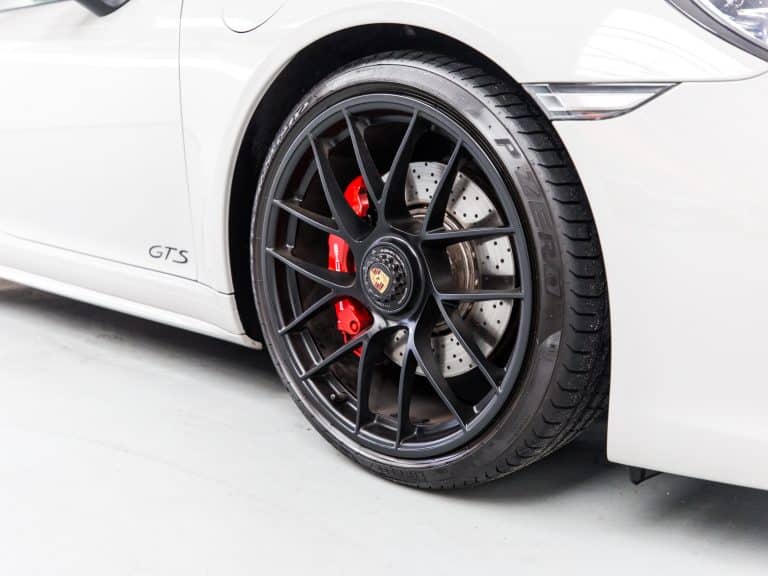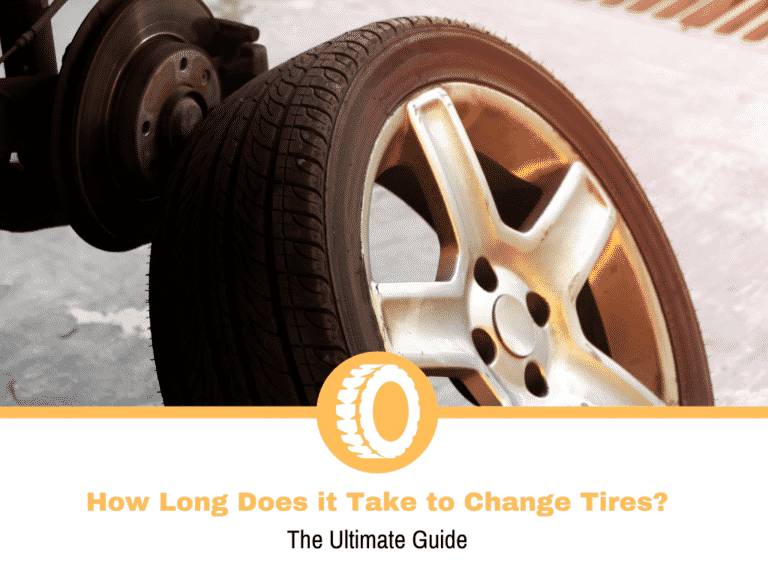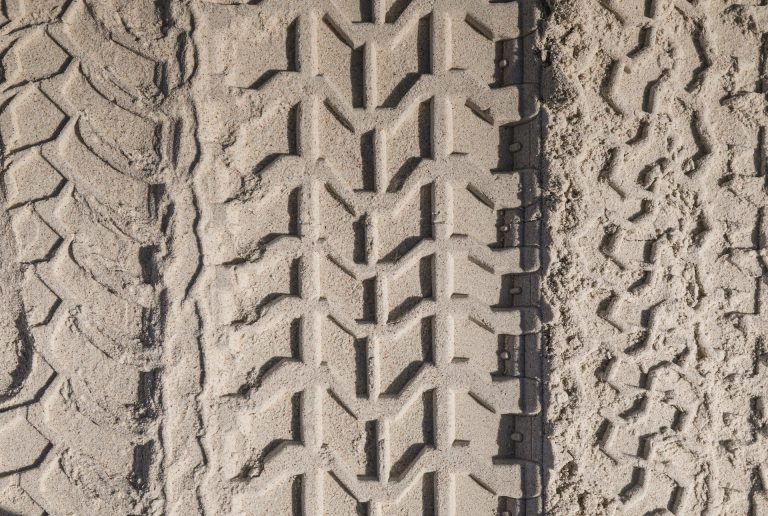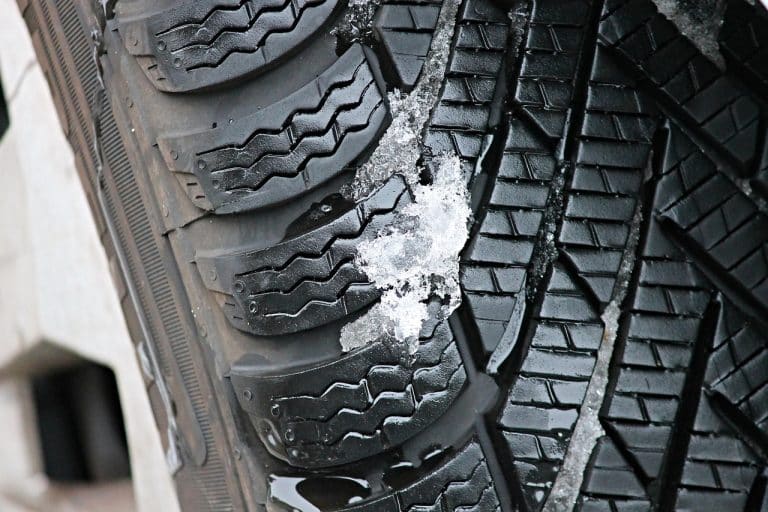How To De-Ice Tires (5 Easy Steps)
Tires and ice are not a good combo. Everyone is aware by now that driving on icy roads poses significant safety concerns, but what about when ice forms on top of your tires? This is even more dangerous as cold temperatures can cause all sorts of defects to your tires. They are likely going to lose pressure, stiffen up, and potentially even crack which can lead to severe tire structural damage, or even blowouts.
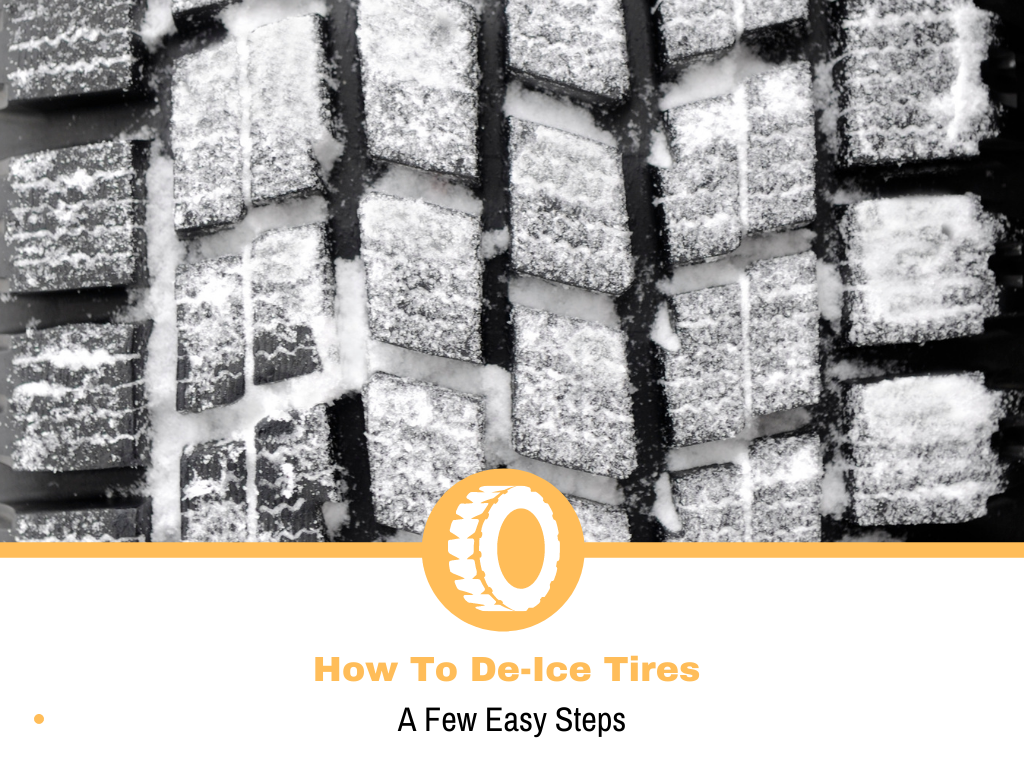
In order to avoid this, you need to remove ice from your tires by following a few simple steps listed below. How to de-ice tires? Read this article and find out.
How To De-Ice Tires
There are a couple of ways how one can de-ice tires, and the most common ones are by using a de-icer spray that is also used to de-ice windshield wipers. If you come across larger ice patches on your tires, also be sure to use an ice scraper that can thoroughly clean the insides of the grooves.
You should also spray your tires with a special silicone-based tire treatment that will prevent ice patches from forming in the future. It’s also a good idea to clean out your wheel wells from snow, slush, and ice in order for them not to come in contact with the tires.
How To De-Ice Tires: Step By Step Guide
- Spray the tires with a de-icer spray
- Scrape off the ice with an ice scraper
- Clean out your wheel wells
- Treat your tires and wheel wells with silicone spray
- Clear your tires after driving
Spray The Tires With A De-Icer Spray
Many de-icing products can be used on various parts of the car such as the windshield, the windshield wipers, the door handles, and tires. A quality de-icer spray can take care of all of these which means that it is safe for tire use as well. These compounds are designed to remove ice quickly without causing any harm to your tires. Only use de-icer sprays that are specifically designed for automotive use.
The most important thing is to go around the tire completely because you want to remove the stubborn ice that has managed to fuse with the tire. This will help you a lot when it comes to scrapping off the ice with a scraper.
Scrape Of The Ice With An Ice Scraper
No matter how effective a de-icer spray can be, you will still have to use the good old scraper to remove all the larger chunks of ice after they have been softened by the spray. You need to do this extra carefully as you don’t want to scratch your wheels, your tires, or even your paint.
Pop off all the larger ice chunks and don’t be shy to spray the de-icer a few times on some more stubborn ice patches.
Clean Out Your Wheel Wells
Your wheel wells are likely going to be covered with snow, ice, slush, and all sorts of dirt particles and debris. You also have to clean these off thoroughly after you finish driving as these can easily spread towards your tires. Cleaning your wheel wells during winter should always be done whenever you wash the car, no matter if you come across ice or not.
Treat Your Tires And Wheel Wells With Silicone Spray
After you are done removing all the larger ice chunks and smaller ice patches, now you have to prevent ice from forming as you don’t want to de-ice your tires every single day. The best course of action would be to use a silicone-based tire treatment spray which is designed to employ a clear no-stick layer on top of your tires which prevents ice from forming in the future.
Sure, a silicone-based spray may not be able to prevent ice from forming completely, but if it does, it is going to be a lot easier to remove the ice if the tire has been sprayed with silicone. Also, don’t forget to spray your wheel wells whenever you spray your tires.
Clean Your Tires After Driving
After you’ve successfully done everything listed to this point, you also want to make sure to clean off any snow and slush from both your tires and your wheel wells. Use a brush to brush off the snow away from the tires as these snow patches tend to turn to ice when the car is parked. Parking your car in a shielded environment such as a garage is also going to help you in the long run.
How Not Do De-Ice Tires?
- Don’t use a hammer
- Don’t use sharp objects
- Don’t pour hot water onto tires
- Don’t try removing ice from your tires by driving
Can I Use A Hammer To De-Ice Tires?
It may seem logical at first, but using a hammer to remove stubborn ice chunks from your tires is going to do more harm than good. One missed blow and you could see yourself making a large dent in either your car or your wheels. Consecutive hammer blows to a stiff tire could also cause tiny micro-cracks within the tire that are surely going to expand and ruin your tires even before the season ends.
Can I Use Sharp Objects To De-Ice Tires?
A sizzle tool or a knife could also seem like effective tools when it comes to de-icing tires, but they could also cause lots of trouble with one minor mistake. The stiffer the tire, the easier it gets to puncture it as it loses its flexibility which enables it to absorb impacts without any issues.
Even though a knife seems like the best tool to de-ice tires because it can clear the ice out from within the threads, it can also scratch your tires or even puncture them entirely.
Can I Use Hot Water To De-Ice Tires?
Whatever you do, don’t attempt to pour hot water on icy tires as that can wreak havoc on your tires. When hot water comes in contact with solid ice, the ice rapidly expands which can destroy a stiff tire in no time. Moreover, even if you do manage to clear off the ice, the water you just poured onto the tires could freeze again which puts you back to square zero.
Can I De-Ice Tires By Driving?
If your tires are only slightly covered with ice, you can drive the car, but that is not going to solve the issue. It is only going to pause it until your park the car up again which puts you back to square zero once again. However, if your tires are severely frozen, you should avoid driving the car as that is extremely unsafe.
Can Ice Damage Tires?
Snow and ice can wear on your tires and ultimately lead them to premature retirement. Whenever ice forms on your tires, it affects the size of your contact patch with the road which means that certain parts of the tire are now tasked with distributing the weight of the car while others are not. This leads to uneven tire wear which is known to destroy tires.
Furthermore, ice also stiffens up the tire, both from the outside and the inside which leads to cracks and could potentially even compromise the structural integrity of the tire. This can lead to miniature cracks all across the surface of the tire which ultimately leads to severe tire cracking.
This is the main reason why summer and winter tires exist as some of the main differences between the two are the ones associated with how the tire copes with outside environments such as temperature, moisture, and lack of moisture. Summer tires are known to stiffen up and crack even if the temperature is far from freezing.
What Makes A Tire Good On Ice?
The reason why ice tires are able to withstand constant exposure to below-freezing temperatures is that they are manufactured with a special mixture that consists of silica which helps the tire remain flexible at all times.
Studded tires are the best pick of the bunch if you regularly traverse over large ice patches such as frozen lakes. They are also extremely effective when it comes to snow driving as the studs can break through the snow and maintain traction at all times. However, do your research before you acquire studded tires as they are not legal in all states.
Conclusion
De-icing or defrosting your tires is something you can do fairly easily, but be sure to do so by following all the steps listed in this article. Use an automotive-grade de-icer spray to soften up all the ice patches that have formed on top of the tire and then scrape those off with your trusty ice scraper. Clean your tires, your wheel wells, and your rims from snow, slush, and ice whenever you can.
Also, be sure to spray the tires with a silica-based treatment that is going to prevent further ice patches from happening. Never try and de-ice your tires with a hammer, a knife, or any other blunt or sharp object. Don’t pour hot water onto the tires and avoid driving your car if the tires are severely frozen.
